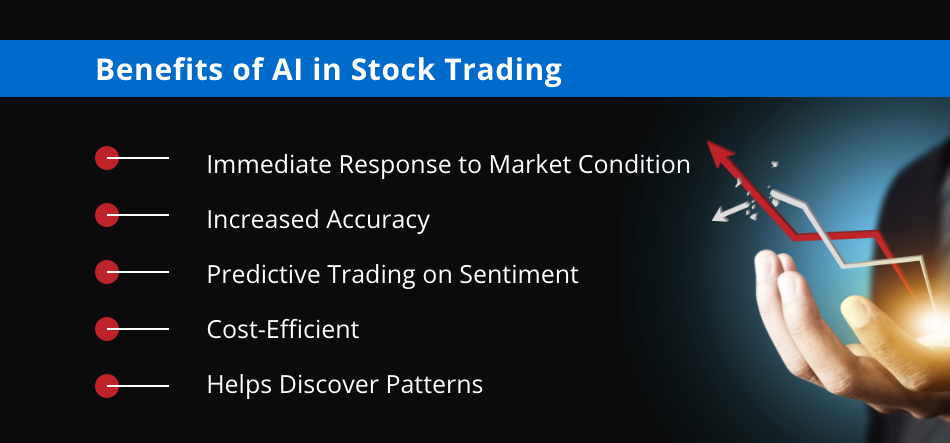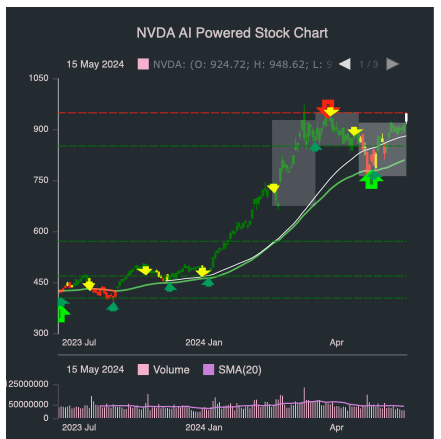20 Top Facts To Picking AI Stock Predictions Analysis Websites
20 Top Facts To Picking AI Stock Predictions Analysis Websites
Blog Article
Top 10 Tips For Evaluating The Ai And Machine Learning Models Of Ai Stock Predicting/Analyzing Trading Platforms
The AI and machine (ML) model employed by stock trading platforms as well as prediction platforms should be evaluated to ensure that the insights they offer are reliable trustworthy, useful, and practical. Models that are overhyped or poorly constructed could lead to inaccurate predictions and even financial losses. Here are 10 top tips for evaluating AI/ML models on these platforms.
1. The model's approach and purpose
Clear objective: Determine whether the model was designed for short-term trading, long-term investing, sentiment analysis or risk management.
Algorithm transparence: Check whether the platform reveals the types of algorithms employed (e.g. Regression, Decision Trees, Neural Networks, Reinforcement Learning).
Customization - Find out whether you can modify the model to suit your trading strategy and risk tolerance.
2. Perform an analysis of the model's performance indicators
Accuracy: Verify the accuracy of the model when it comes to forecasting the future. However, don't solely use this measure since it can be misleading when used in conjunction with financial markets.
Recall and precision. Evaluate whether the model accurately predicts price fluctuations and minimizes false positives.
Risk-adjusted results: Determine if model predictions lead to profitable trading in the face of accounting risk (e.g. Sharpe, Sortino and others.).
3. Check the model's performance by backtesting it
Historical performance: Use the old data to back-test the model to determine the performance it could have had in the past under market conditions.
Test the model on data that it hasn't been taught on. This can help avoid overfitting.
Analysis of scenarios: Evaluate the model's performance in various market conditions.
4. Be sure to check for any overfitting
Signs of overfitting: Search for models that perform exceptionally well with training data, but poorly on unseen data.
Regularization methods: Determine whether the platform is using techniques such as L1/L2 normalization or dropout in order to prevent overfitting.
Cross-validation. Make sure the platform is performing cross validation to determine the generalizability of the model.
5. Examine Feature Engineering
Relevant features: Check whether the model incorporates meaningful features (e.g., volume, price emotional indicators, sentiment data macroeconomic variables).
Select features: Ensure the platform only selects the most statistically significant features, and does not include redundant or irrelevant information.
Dynamic updates of features Test to determine if over time the model adjusts to the latest features or to changes in the market.
6. Evaluate Model Explainability
Interpretation - Make sure the model gives the explanations (e.g. value of SHAP or the importance of a feature) to support its claims.
Black-box model Beware of platforms that employ models that are too complicated (e.g. deep neural networks) without describing the tools.
User-friendly insights : Determine if the platform is able to provide actionable information in a form that traders can easily understand.
7. Check the adaptability of your model
Changes in the market - Make sure that the model is modified to reflect changing market conditions.
Check to see if your platform is updating its model on a regular basis with the latest information. This can improve performance.
Feedback loops: Ensure that the platform integrates real-world feedback from users and feedback from the user to enhance the model.
8. Be sure to look for Bias, Fairness and Unfairness
Data bias: Make sure the data used for training is a true representation of the market and without biases.
Model bias: Make sure the platform monitors the model biases and minimizes them.
Fairness: Ensure that the model doesn't favor or disadvantage certain stocks, sectors or trading styles.
9. Assess Computational Effectiveness
Speed: Check whether the model is able to generate predictions in real-time or with minimal latency, especially for high-frequency trading.
Scalability: Check whether the platform is able to handle large data sets with multiple users, without any performance loss.
Resource usage: Determine whether the model is using computational resources efficiently.
10. Transparency and Accountability
Model documentation - Make sure that the model's documentation is complete information about the model, including its structure, training processes, and limitations.
Third-party validation: Find out whether the model was independently validated or audited by a third person.
Error handling: Examine to see if your platform has mechanisms for detecting and correcting model mistakes.
Bonus Tips
User reviews and case studies Review feedback from users as well as case studies in order to assess the performance of the model in real-life situations.
Trial period: You may use a demo, trial or a free trial to test the model's predictions and usability.
Support for customers - Make sure that the platform you choose to use is able to provide robust support in order to resolve problems related to model or technical issues.
Following these tips can aid in evaluating the AI models and ML models that are available on stock prediction platforms. You'll be able to assess whether they are trustworthy and trustworthy. They must also be aligned with your trading goals. See the most popular inciteai.com AI stock app for site examples including ai for investment, best ai for trading, ai stock, ai investing app, ai investing, best ai stock, best ai stock trading bot free, ai stocks, chart ai trading assistant, ai investment platform and more.
Top 10 Tips To Evaluate The Community And Social Features Of Ai Stock Trading Platforms
Understanding how people share information, interact and grow is vital in understanding the AI-driven trading as well as stock prediction platforms. These features can help improve the user experience as well as provide valuable support. Here are ten top tips to help you evaluate the social and community aspects of these platforms.
1. Active User Group
Tips: Choose an online platform with a large user base who frequently participates in discussions, provides insights and feedback.
Why: A community that is vibrant is a place where users can grow and learn together.
2. Discussion Forums and Boards
Tip: Evaluate the quality and activity level of discussion forums or message boards.
Why Forums are important: They allow users to post questions, discuss strategies and share market trends.
3. Social Media Integration
Tips: Find out if the platform you are using allows users to share information and updates on social media channels, for example, Twitter or LinkedIn.
Why social media integration can improve engagement and provide real time market updates.
4. User-Generated Material
Find features that allow users to create, share, and modify content.
Why: User generated content encourages a collaborative atmosphere and gives a different view.
5. Expert Contributions
Tips: Make sure the platform has contributions from industry experts like market analysts, or AI experts.
Why: Expert insight adds authenticity and depth to community discussions.
6. Real-Time chat and messaging
TIP: Evaluate the available instant chat and messaging options to allow users to chat in real-time.
Why: Real-time interaction facilitates rapid information exchange and collaboration.
7. Community Moderation and Support
TIP: Assess the moderated and support within your local community.
What's the reason? Effective moderating will ensure that a positive and respectful atmosphere is maintained. user support resolves issues quickly.
8. Events and Webinars
TIP: Make sure the platform hosts live Q&As hosted by experts, or webinars.
Why: These conferences provide an opportunity for industry professionals to interact with participants and gain knowledge from them.
9. User Reviews and Feedback
TIP: Find options that let users provide feedback or reviews on the platform and its community features.
Why: The feedback from users helps to determine strengths and areas for improvement within the ecosystem.
10. Rewards and Gamification
Tips: Determine if the platform incorporates gaming elements (e.g. badges, leaderboards) or incentives for participation.
The reason: Gamification can encourage users to be more engaged with the community and its platform.
Bonus Tip: Privacy and Security
Be sure to use robust security measures and privacy protections for the community and social features. This will protect your information and personal interactions.
You can evaluate these aspects to determine if you're in a position to choose a trading platform that offers a supportive and engaging community, which will enhance your knowledge and skills in trading. Read the most popular use this link for best ai stock prediction for website info including best ai for stock trading, ai in stock market, ai copyright signals, best ai trading platform, ai tools for trading, investing with ai, can ai predict stock market, can ai predict stock market, chart ai trading, stocks ai and more.